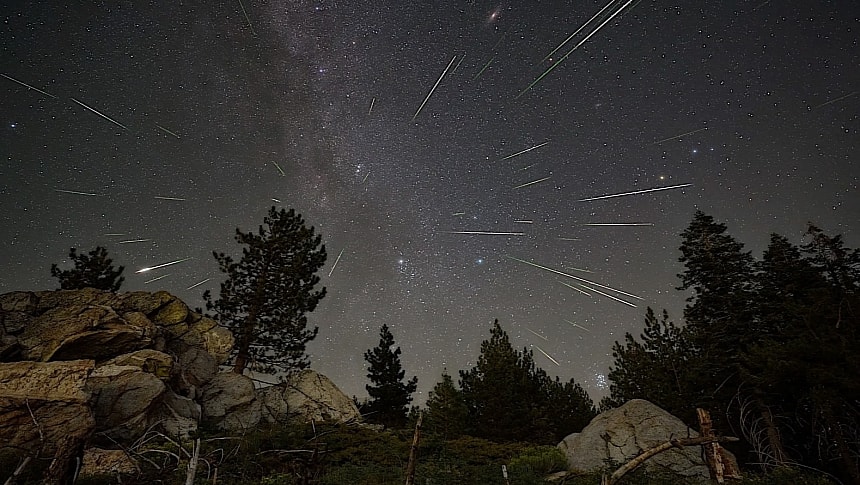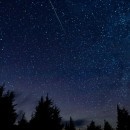With the month of July half done, our planet is now beginning to get its yearly dose of shooting stars. That's right, it is almost time for the Perseids, which in 2024 will peak on the night of August 11.
The Perseids are what we call small meteors burning in the atmosphere of our planet as Earth moves through the tail of a comet calledSwift-Tuttle. They are called that because the place in the sky they appear to come from, or the radiant, is the Perseus constellation. We're used to them, they pose no actual danger, but the show they put on is worth at least a watch.
Swift-Tuttle is a pretty large chunk of dust, ice, and rock. It has a nucleus 16 miles (26 km) wide, twice as big as the celestial object that is believed to have wiped out the dinosaurs, and it moves around the Sun once every 133 years.
Like all comets, Swift-Tuttle leaves behind it a trail of ice and rock. It did the same the last time it crossed Earth's orbit, in 1992 (the next encounter should occur in 2125), and now every time our planet moves through that area, we're treated to a shooting star spectacle.
Technically speaking, bits and pieces of the comet are already falling into our atmosphere at speeds of up to 37 miles (59 km per second), but we're not yet in the densest part of the debris field. As said, that will happen on August 11, with a pretty interesting show being visible the night before and after.
Whereas at the moment we're getting a few meteors per hour, there's a change that at their peak the Perseids will burn in the atmosphere in the hundreds. Sadly, they are not very bright, meaning there are some extra steps you'll have to take to make sure you catch them in 2024.
Just like when you want to look at the stars, the best place to experience the Perseids is a very dark one, free of artificial light pollution. Generally, that means traveling outside of the city, so you'll have to make sure the sky will be clear in the area you plan to visit.
NASA warns that this year's Perseids shower will be impacted by a 53 percent waxing Moon, meaning the brightness of this phase between the new and full Moon will interfere with the experience for most of the night. Luckily, says the space agency, "the Moon will set right as the Perseids begin to peak."
As it does every year, our planet is expected to clear the Swift-Tuttle debris trail at the beginning of September, so chances are we'll get to see stray shooting stars even after the August peak.
Swift-Tuttle is a pretty large chunk of dust, ice, and rock. It has a nucleus 16 miles (26 km) wide, twice as big as the celestial object that is believed to have wiped out the dinosaurs, and it moves around the Sun once every 133 years.
Like all comets, Swift-Tuttle leaves behind it a trail of ice and rock. It did the same the last time it crossed Earth's orbit, in 1992 (the next encounter should occur in 2125), and now every time our planet moves through that area, we're treated to a shooting star spectacle.
Technically speaking, bits and pieces of the comet are already falling into our atmosphere at speeds of up to 37 miles (59 km per second), but we're not yet in the densest part of the debris field. As said, that will happen on August 11, with a pretty interesting show being visible the night before and after.
Whereas at the moment we're getting a few meteors per hour, there's a change that at their peak the Perseids will burn in the atmosphere in the hundreds. Sadly, they are not very bright, meaning there are some extra steps you'll have to take to make sure you catch them in 2024.
Just like when you want to look at the stars, the best place to experience the Perseids is a very dark one, free of artificial light pollution. Generally, that means traveling outside of the city, so you'll have to make sure the sky will be clear in the area you plan to visit.
NASA warns that this year's Perseids shower will be impacted by a 53 percent waxing Moon, meaning the brightness of this phase between the new and full Moon will interfere with the experience for most of the night. Luckily, says the space agency, "the Moon will set right as the Perseids begin to peak."
As it does every year, our planet is expected to clear the Swift-Tuttle debris trail at the beginning of September, so chances are we'll get to see stray shooting stars even after the August peak.










